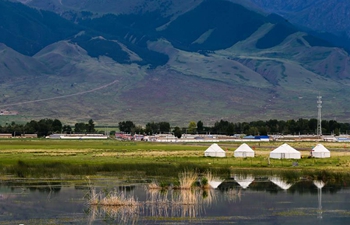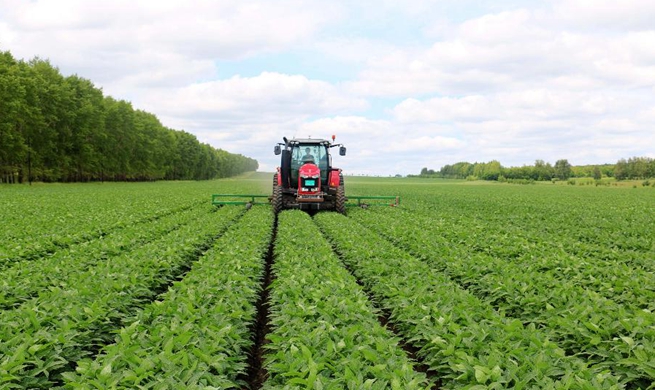by Alessandra Cardone
ROME, July 6 (Xinhua) -- Areas covered by forest shrank at global level from 31.6 percent of total land in 1990 to 30.6 percent in 2015, but "the pace of loss has slowed in recent years," the Food and Agriculture Organization (FEO) said on Friday.
In its report "State of the World's Forests 2018", FAO said "there is quantitative evidence to show that forests are being managed more sustainably."
That would positively affect the path towards several Sustainable Development Goals (SDGs), and especially those goals related for example "to livelihood and food security of many rural poor, access to affordable energy... sustainable consumption and production, and climate change mitigation."
UNEVEN PROGRESS
However, the situation was not homogeneous, and the recent progress made was not equally distributed, FAO's Director of the Forestry Policy and Resources Division Eva Muller noted.
"This trend has been very uneven across continents," Muller told Xinhua. "The rate of (forest) loss has decreased, indeed, but still with a huge difference between various regions."
Europe and North America in fact increased their respective forest areas in proportion to their total land from 40.3 percent in 1990 to 41 percent in 2015.
Progresses were also made in Eastern and South Eastern Asian countries, which boosted their forests from 28.5 percent in 1990 to 29.6 percent, while Central and Southern Asia improved theirs from 9.5 percent to 10 percent.
While regions like Europe counted on a strong tradition of sustainable forest policies, according to Muller, in Asia a big role was played by China, which "has made incredible efforts in reforestation and forest management."
Other regions showed an opposite trend, with forests shrinking from 30.6 percent to 27.1 percent in Sub-Saharan Africa, and from 51.3 percent to 46.4 percent in Latin America and the Caribbean.
Australia and New Zealand saw their forests decreasing slightly from 17.4 percent in 1990 to 17 percent in 2015, as well as Northern Africa and Western Asia, which moved from 3.9 percent to 3.8 percent.
Oceania (without Australia and New Zealand) remained stationary at 70.1 percent.
SUSTAINABLE FOREST MANAGEMENT
Increasing sustainable forest management at global level was crucial to help achieve SDGs provided by the 2030 Agenda, said the report.
FAO said global primary objectives of ending poverty and achieving sustainability would be "greatly enhanced by strengthening legal frameworks that recognize and secure the rights of local communities to access forests."
"Initiatives on forests, agriculture, food, land use, rural and national development must synchronize in the future, if sustainable development is to be realized," the UN agency stressed.
In its report, FAO stressed the link between sustainable agriculture and forest conservation was increasingly crucial for development, and would require both virtuous public policies and responsible private behaviours (especially from companies).
How to increase agricultural production and improve food security without reducing forest areas was in fact seen as "one of the great challenges of our times," the report stated.
Some common factors could identify the countries able to maintain or even increase their forests and ensure food security at the same time, according to the FAO Director of Forestry Policy.
One of those factors, she explained, was that such countries underwent economic reforms, and, secondly, that they successfully promoted a balanced approach between forest conservation and land policies, and an integration of their forest policy into broader sustainable development plans.
Another aspect highlighted was the connection between forest management and water supply, and the role it plays in pursuing the 2030 Agenda's SDGs.
"Water Quality -- essential to the health and life of both rural and urban populations -- is directly related to forest management," FAO wrote.
Although three-quarters of the world's accessible freshwater were located in areas covered by forests, some 40 percent of the 230 major watersheds at global level lost more than half of their original tree cover, the organization explained citing researches.
"Despite this, the area of forests managed for soil and water conservation has increased globally over the past 25 years, and in 2015 a quarter of forests were managed with soil and/or water conservation as an objective," it said.
















